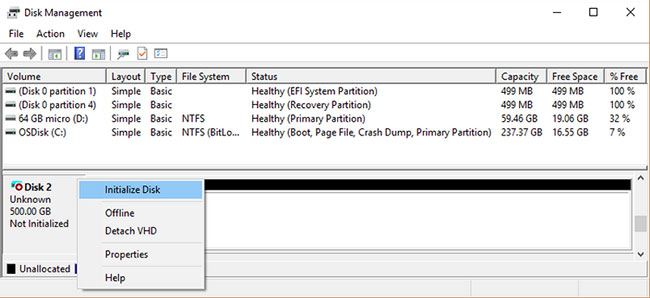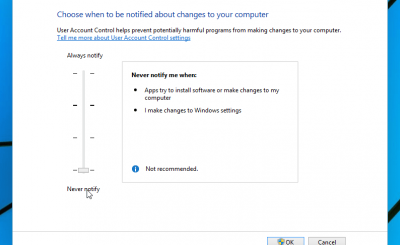SSD drives greatly increase PC performance and are often used in conjunction with traditional hard drives. Before you start using an SSD as secondary storage, you need to initialize it correctly. Failure to do so may result in the operating system failing to detect the SSD.
While this may seem technical and complicated, in reality, the initial setup of an SSD is easier than you might think.
How to initially set up an SSD in Windows 10
Initial setup is an irreversible process, so you need to make sure you do the initial setup properly for your SSD. You may lose your data permanently if you choose the wrong SSD or hard drive. Once you’ve verified the name of the primary, working storage device (SSD or hard drive), you can begin the initial setup process.
Disk Management is a powerful utility tool that allows you to manage various, connected storage devices by allocating drive letters and configuring drive partitions.

To initially set up an SSD on Windows 10 via Disk Management:
1. Search Disk Management in the search bar of the menu Start, right click on Create and format hard disk partitions, then select Run as administrator.
2. Make sure the drive you want to initially set up is in state Online. If it is listed as Offline, right-click the drive and select Online.
3. Right click on the SSD you want to set up initially and select Initialize Disk.
4. In the dialog box Initialize Disk, select the SSD you want to initially set up, and select a partition type (partition types are detailed in the next section).
5. Click OK to begin the initial setup of the drive.
6. After you have initially set up the drive, right-click the SSD and select New Simple Volume.
7. Done New Simple Volume Wizard to allocate volume for your SSD.
You have now completed the initial setup of your SSD and can access it through File Explorer.
How to choose partition type for SSD
Each storage device connected to the computer has a specific partition type. The partition type determines how Windows will access the data on the drive. There are two main types of partitions on Windows 10: GPT and MBR.
GUID Partition Table (GPT) is the more commonly used partition type for SSDs and hard drives. By default, Windows 10 will partition the drive using the GPT format. GPT is the preferred format as it supports volumes larger than 2TB and is compatible with the latest UEFI-based systems. Master Boot Record (MBR) is a traditional partition style used by older computers and portable hard drives such as memory cards.
The article recommends using GPT partitioning for SSDs because it is better supported, more secure and allows larger volumes.
You can also choose to convert MBR drives to GPT drives or vice versa. However, you will need to format the drive first and erase all data.
Hope you are succesful.
Source link: How to initially set up an SSD in Windows 10
– https://techtipsnreview.com/





